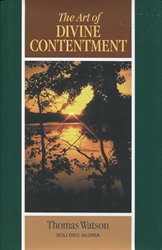



By her intercession he regained the use of his strong right hand. According to Alban Butler, he had special reasons for honouring the Mother of God. The sermons on the Assumption were preached by the Saint in or about a.d. And halting formularies lead to halting souls, and to the proclamation of the strange device that religious truth is of no consequence so long as men lead good lives. We cannot love what we do not know, and is not God unknowable? Halting formularies say it when they point to matter, which God has glorified, as inglorious. We are so constituted that images we must have: our minds cannot reach God’s throne without the help of corporeal things. What are the consequences of rejecting divinely appointed images? Hopeless and heart-destroying doubt caused by the undue exaltation of humanity: in other words, creature, instead of divine, worship. Again and again the Saint repeats that as we must not make an image of the Invisible God, so neither must we refuse to look upon the Son, His Image, first in eternity, and then Incarnate. God, the Son, is the Image by essence, and then He becomes a visible image or form in time, clothed in flesh and blood, showing us by His own example that our worship of God is through corporeal things. This is the doctrine which St John Damascene traces back to the eternal ages before time was, in the divine ἐικων of the Father in the Person of the Son. I believe in the Communion of Saints follows upon I believe in God, so that the enemies of the Saints are the enemies of God. No part of Catholic belief is a vain word, nor can the true children of the Church say with their lips what they do not hold in their hearts.

St John Damascene proclaims the Communion of Saints and the honour of God through His chosen and favoured servants. Every article in the creed has its special defender. The special champion of holy Images is St John Damascene, whose treatise is now published for the first time in English. The seventh General Council condemned his assault, and it determined the different kinds of worship, using the Greek terms of latreia and douleia. Our English image breakers are in the camp of Leo the Isaurian, who in the eighth century waged war against holy images, on the plausible pretext that they withdrew honour from God. He brought it forth and witnessed to the teaching of the Church in language which present ‘exciting scenes’ in Anglican churches brings home in the most forcible way. He would willingly have remained silent, but he would not bury his talent of eloquence. A great Christian of the eighth century found himself called upon to face an imperial Iconoclast. A Treatise on Images will not be out of place in a public, which is confusing the making of images with the making of idols.


 0 kommentar(er)
0 kommentar(er)
